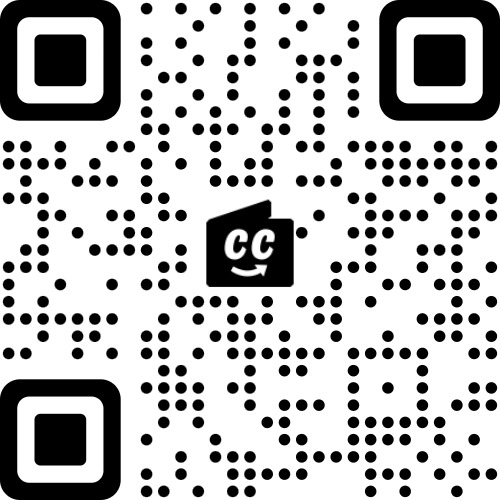Delivering humanitarian help, particularly in areas hit by natural catastrophes or violence, is a difficult endeavor. Traditional assistance delivery systems encounter various hurdles, such as logistical issues, bureaucratic red tape, and intermediaries, all of which can hinder the transfer of resources to those in need. Blockchain technologies and stablecoins like USDC can overcome these issues and enhance the delivery of humanitarian relief.
Circle investigates how cutting-edge technology like blockchain and stablecoins may enhance the assistance distribution process, making it more transparent, speedier, and cost-effective.
Providing Humanitarian Assistance to Those in Need
Multiple hurdles frequently impede the effectiveness of humanitarian relief initiatives. Traditional assistance delivery techniques might include complicated logistics, layers of bureaucracy, and a variety of intermediaries, all of which can impede resource distribution. Because some circumstances are particularly time-sensitive, it is critical to speed up the help distribution procedure.
Following natural disasters, infrastructure damage, and communication interruptions can significantly limit relief groups’ capacity to contact and aid individuals in need. Access to impacted areas in war zones, such as Ukraine today, may be hampered by ongoing conflicts, exposing relief workers and clients to a significant danger.
Traditional banking systems and NGO payment channels that support assistance delivery can be time-consuming and costly to run, particularly in distant or risky areas. Corruption, fraud, and incompetence frequently afflict the traditional assistance distribution process, siphoning off resources meant for the most disadvantaged.
Dollar digital assets can help improve the assistance distribution process by minimizing middlemen, boosting transparency, enhancing speed, and lowering costs. USDC enables the quick and dependable distribution of cash to individuals in need, avoiding the problems associated with traditional assistance delivery channels.
The Advantages of Using Digital Payments to Deliver Humanitarian Aid
Humanitarian assistance payment options based on blockchain provide various advantages for aid delivery. Among the advantages are:
- Transparency – Blockchain allows for the construction of a tamper-proof and transparent record of transactions. This allows donors and relief groups to track the flow of cash from the source to the recipient, ensuring that resources are neither misdirected nor diverted.
- Convenient reach in less accessible locations – Digital payments may be delivered and received everywhere there is internet connectivity, circumventing the constraints of traditional banking infrastructure. This is especially useful in rural places or regions with undeveloped finance systems, allowing assistance organizations to reach out to individuals in need more efficiently. This advantage may be particularly apparent in areas devastated by natural catastrophes or conflict zones.
- Corruption prevention – By lowering the number of middlemen and providing end-to-end money tracking, blockchain-based payments can aid in the fight against corruption and fraud in charity distribution. Because blockchain transactions are transparent, unscrupulous actors find it more difficult to exploit the system for personal advantage.
- Increased speed – Digital payments on blockchain networks may be handled in minutes, if not seconds, drastically shortening the time it takes for help to reach individuals in need. This internet speed is critical during catastrophes or natural disasters when delivering fast aid is critical.
- Low fees – When compared to traditional banking and payment systems, blockchain transactions often suffer cheaper fees, allowing a larger part of help to be channeled to recipients. Because of the cost savings, additional resources are available to meet the needs of affected areas.
- Financial inclusion – Individuals who are unbanked or underbanked can use digital payments to participate in the global financial system and get direct aid. Aid users can access cash without a traditional bank account by utilizing digital wallets and cell phones.
These advantages make blockchain an effective instrument for increasing the efficiency of humanitarian relief.
Circle’s Social Responsibility Commitment
Circle is dedicated to social responsibility and making a difference in the world. The firm was formed a decade ago on the premise that public blockchains may improve the efficiency and inclusiveness of the global economic and financial system.
Circle’s social responsibility commitment centered on the fundamental goal of making financial innovation accessible to individuals and communities that are frequently left behind by the old financial system. To do this, the business created Circle Impact in 2021. Among the areas of emphasis are:
- Financial Access – They empower a worldwide community of developers, businesses, and initiatives that use USDC and other Circle services to reduce the cost and hassle of money transfers throughout the world.
- Driving Digital Financial Literacy – Circle established Circle U to democratize finance and equip individuals with the tools and information they need to participate with financial technology. This information library for financial technology covers subjects including the evolution of money, digital assets, and blockchain technology. Circle has collaborated with four Historically Black Colleges and Universities (HBCUs) and one Hispanic Serving Institution (HSI) to share its curriculum and educate the next generation of leaders. Students who complete the program are eligible for pipeline possibilities with Circle. Circle’s collaborations with universities such as Bowie State University and Rhodes Business School in South Africa highlight the company’s focus on digital financial literacy.
- Circle Impact powers humanitarian help, disaster relief, and charitable giving by utilizing USDC to promote speedier, corruption-resistant payments. Organizations can better manage payments and guarantee they reach their intended beneficiaries through public-private partnerships.
Circle displays its commitment to social responsibility by aiming to have a long-term, beneficial influence on communities across the world.
Conclusion
Blockchain technology and stablecoins such as USDC have the potential to transform the way help is distributed to people in need. These digital technologies can assist overcome the obstacles associated with traditional aid distribution systems by providing transparency, speed, ease, and security.
Circle has been collaborating with humanitarian groups to illustrate how blockchain might help vulnerable persons and communities. They can strive towards a future where humanitarian help is distributed more effectively and fairly as they continue to investigate the potential of blockchain and stablecoins



